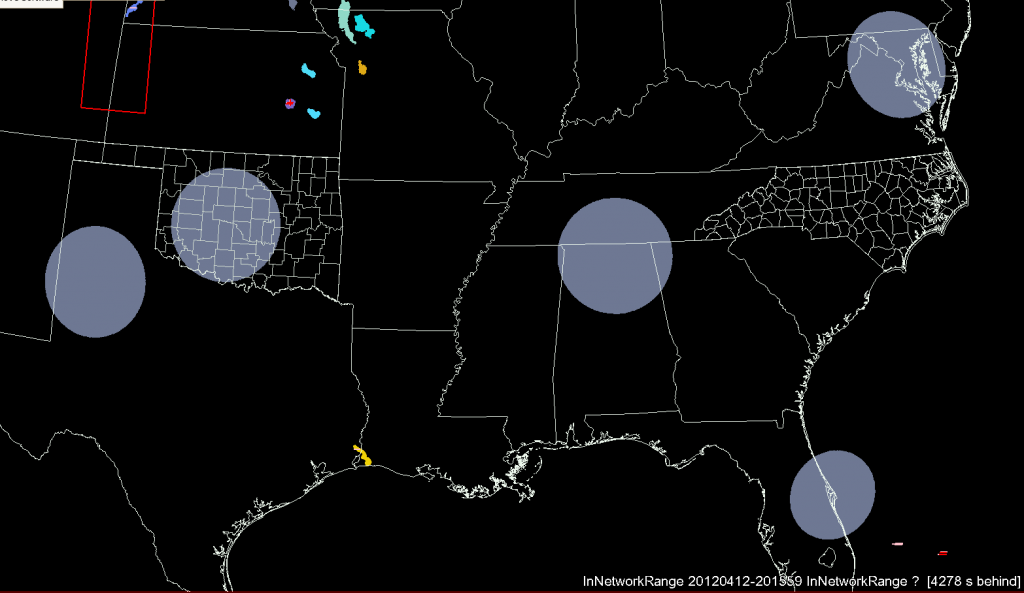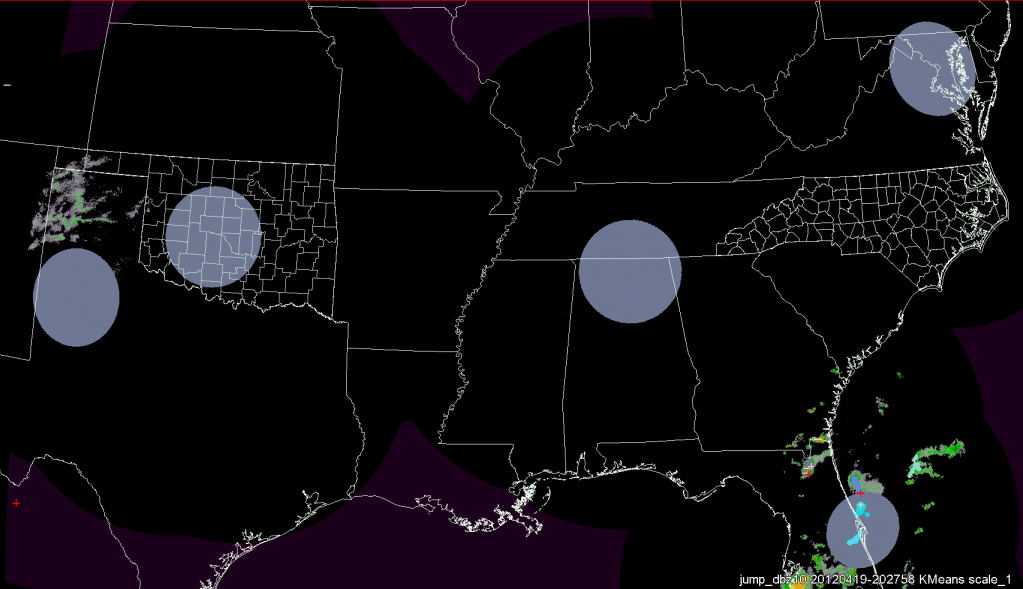Since the LMA networks depend on a line-of-sight for the time-of-arrival detections, distance from the network center is a key aspect to quality control. While accuracy of a any VHF detection in the center of the network is around ~10 m, this drops off dramatically with range. Flash sorting helps to remove some of this dependency, however, we still want to make sure jumps are not occurring simply because a storm is moving into to the LMA domain.
Originally, this network range issue was planned to be part of the flash sorting algorithm, but after looking at the data we decided to change it to a strict 150 km range (Fig. 1). But I was still seeing an effect of storms entering the network, so I decided to reduce the range again to 125 km (Fig. 2).

We’ve now switched to 125 km for the majority of the networks (100 km for FL). This means that if any part of the identified k-means cluster overlaps the region within 125 km of the network center it is eligible for a lightning jump. (And, yes, this does mean that the majority of a cluster can be outside the range, hence why we went a little stricter and confined it to 125 km instead of 150 km).
The new network range map can be seen below:

I don’t have the exact location of the OKLMA southwest extension yet, nor is the data feed working in realtime so that is being left out for the moment.

I think this is probably a good solution – effectively getting the jump algorithm to see and track a storm as it enters the domain, but waiting to evaluate the actual jump incidents until the tracked storm blob is hopefully more enveloped by the LMA domain. Hopefully this smaller domain will still give us ample opportunities to evaluate Total Lightning Jumps.